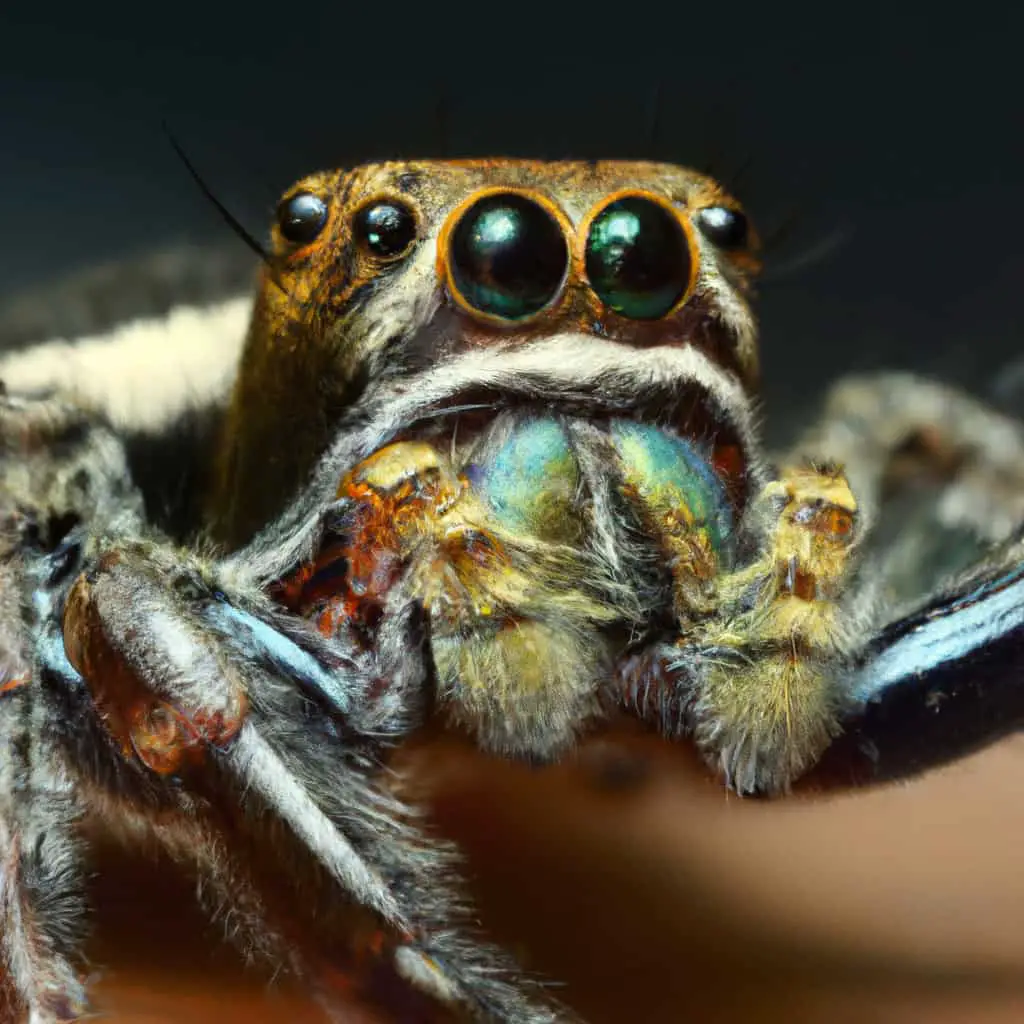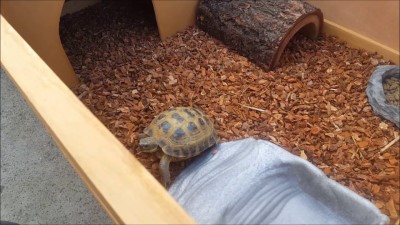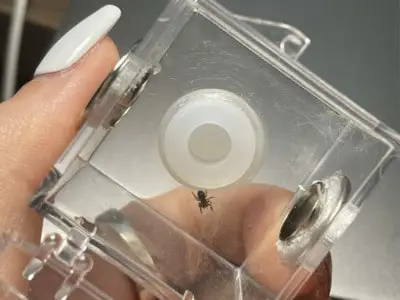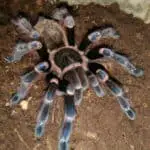Jumping spiders are fascinating creatures that have become increasingly popular as pets in recent years. As a result, many people are now curious about the cost of owning a jumping spider. The price of a pet jumping spider can vary based on several factors, such as the type of spider, its size, and where you purchase it from.
Some jumping spiders can be quite affordable, with prices ranging from $10 to $30. However, other species can be more expensive, with some rare spiders costing hundreds of dollars. Additionally, the cost of owning a jumping spider can also depend on factors such as the type of enclosure you provide and the food and supplies you need to keep your spider healthy.
Key Takeaways
- The cost of owning a jumping spider can vary depending on the type of spider and its size.
- Some jumping spiders can be quite affordable, while others can be more expensive due to their rarity or unique markings.
- The cost of owning a jumping spider can also depend on factors such as the type of enclosure you provide and the food and supplies you need to keep your spider healthy.

What Are Jumping Spiders?
Jumping spiders are a type of spider that belong to the family Salticidae. They are known for their unique traits, including their exceptional vision and ability to jump up to 50 times their body length. These arachnids are native to many parts of the world, and there are over 5,000 species of jumping spiders.
Jumping spiders come in a variety of sizes, colors, and markings. Some are brightly colored, while others are more muted. They have book lungs, which are a type of respiratory organ that allows them to breathe air. Jumping spiders are also known for their large, forward-facing eyes, which give them excellent vision.
One of the most interesting things about jumping spiders is their hunting behavior. They use their excellent vision to locate prey, and then they pounce on it with lightning-fast speed. This makes them one of the most effective hunters in the spider world.
If you’re interested in getting a jumping spider as a pet, there are many different spider species to choose from. The cost of a pet jumping spider varies depending on the type and size of the spider, but most jumping spiders cost between $10 and $75.
Types of Jumping Spiders
Jumping spiders are known for their unique ability to jump long distances and their large, adorable eyes. They come in a wide variety of sizes, colors, and markings, making them a popular choice for pet owners. In this section, I will discuss three popular types of jumping spiders: the Regal Jumping Spider, the Zebra Jumping Spider, and the Bold Jumping Spider.
Regal Jumping Spider
The Regal Jumping Spider, also known as Phidippus regius, is one of the most popular jumping spider species. They are known for their striking black and white markings and their curious and friendly personalities. Regal Jumping Spiders can grow up to 18mm in size and have a leg span of up to 50mm. They are relatively easy to care for and can be purchased for around $20.
Zebra Jumping Spider
The Zebra Jumping Spider, also known as Salticus scenicus, is another popular species of jumping spider. They are known for their black and white striped bodies and their ability to jump up to six times their body length. Zebra Jumping Spiders come in a variety of sizes and colors, with males typically being smaller than females. They are also relatively easy to care for and can be purchased for around $10.
Bold Jumping Spider
The Bold Jumping Spider, also known as Phidippus audax, is a larger species of jumping spider that can grow up to 18mm in size. They are known for their bold and curious personalities and their ability to jump up to 50 times their body length. Bold Jumping Spiders come in a variety of colors and markings, with males typically being smaller than females. They are also relatively easy to care for and can be purchased for around $20.
In conclusion, jumping spiders are a popular choice for pet owners due to their unique characteristics and personalities. The Regal Jumping Spider, Zebra Jumping Spider, and Bold Jumping Spider are just a few examples of the many types of jumping spiders available for purchase. With proper care and attention, these fascinating creatures can make great pets for spider enthusiasts of all ages.
Cost of Owning a Jumping Spider
Jumping spiders are known for their unique characteristics, making them a popular choice as a pet. They are relatively affordable, and their maintenance cost is low. In this section, I will discuss the cost of owning a jumping spider, including the purchase price, enclosure and accessories cost, and maintenance and feeding cost.
Purchase Price
The purchase price of a jumping spider varies depending on the species, age, and where it is bought. You can buy a jumping spider at a pet store or online. The cost of a jumping spider ranges from $10 to $20. However, some rare species can cost up to $50. It is important to note that the price of a jumping spider may vary depending on where you live.
Enclosure and Accessories Cost
When you buy a jumping spider, you need to provide it with an enclosure that is suitable for its size. A small terrarium with a lid is ideal for a jumping spider. The enclosure should have enough space for the spider to move around and climb. The cost of a terrarium ranges from $10 to $50, depending on the size and quality.
You also need to provide your jumping spider with substrate, which is the material that lines the bottom of the terrarium. The substrate should be safe for your spider and easy to clean. The cost of substrate ranges from $5 to $10.
Additionally, you will need to buy accessories such as climbing branches, hiding spots, and water dishes. These accessories are not necessary, but they can make your spider’s enclosure more comfortable. The cost of accessories ranges from $5 to $20.
Maintenance and Feeding Cost
Jumping spiders are easy to care for, and their maintenance cost is low. You need to clean the enclosure once a week and provide your spider with food and water. The cost of maintenance and feeding depends on the type of food you provide.
Jumping spiders feed on insects such as mealworms and fruit flies. The cost of food ranges from $5 to $10 per month. You can buy food at a pet store or online.
In conclusion, the cost of owning a jumping spider is relatively affordable, and their maintenance cost is low. The total cost of ownership ranges from $30 to $100, depending on the species and where you buy it. If you are considering a jumping spider as a pet, make sure to provide it with a suitable enclosure and feed it properly.
Caring for Your Jumping Spider
As a pet owner, it is important to provide proper care for your jumping spider to ensure its well-being. In this section, I will discuss the housing, feeding, and handling of your jumping spider.
Housing and Habitat
Jumping spiders are easy to care for and do not require a lot of space. A small terrarium or enclosure with a secure lid is ideal for your jumping spider. The enclosure should be well-ventilated and provide enough space for your spider to move around comfortably.
The substrate should be kept dry and clean, and you can add some decorations such as rocks, branches, or leaves for your spider to climb on. The temperature should be kept between 70-80°F, and you can use a heat lamp or heating pad to maintain the temperature.
Feeding and Diet
Jumping spiders are carnivores and can eat a variety of insects such as crickets, mealworms, and fruit flies. It is important to provide your spider with a varied diet to ensure proper nutrition.
You can feed your spider once or twice a week, and it is recommended to feed them small amounts of food at a time. Make sure to remove any uneaten food to prevent mold or bacteria growth in the enclosure.
Handling and Interaction
Jumping spiders are friendly and non-aggressive, but they are delicate creatures. It is important to handle them with care to prevent accidental injuries.
You can handle your spider if you want, but limit handling to minimize stress. Always use protective gear such as gloves or a soft brush when handling your spider. Avoid touching their web as this can damage it and stress your spider.
In conclusion, taking care of a jumping spider is easy and straightforward. By providing a suitable habitat, a varied diet, and gentle handling, you can ensure that your spider will live a healthy and happy life.
Understanding Jumping Spider Behavior
Jumping spiders are known for their unique personalities and behavior. They are curious and active, which makes them a fascinating pet to observe. These spiders are hunters and have excellent eyesight, which allows them to track their prey with precision.
Jumping spiders are not aggressive towards humans and are generally considered friendly. They are known for their inquisitive nature and will often approach humans to investigate. They are also known to be territorial, especially during mating season.
Jumping spiders have different personalities and behaviors depending on the species. Some species are more active and curious, while others are more docile and prefer to stay hidden. It is important to research the specific species of jumping spider before getting one as a pet to ensure that it matches your expectations and lifestyle.
Jumping spiders are excellent hunters and use their exceptional eyesight to track and capture their prey. They are also known for their jumping ability, which helps them to catch their prey with precision. These spiders do not spin webs to catch their prey, but instead, they actively hunt for it.
In conclusion, jumping spiders are fascinating pets to observe due to their unique personalities and behavior. They are friendly towards humans and are excellent hunters with exceptional eyesight. It is important to research the specific species of jumping spider before getting one as a pet to ensure that it matches your expectations and lifestyle.
Health and Safety Concerns
Jumping spiders are generally considered safe to keep as pets and are not aggressive towards humans. However, like all spiders, they are capable of biting if provoked.
Spider Bites and Venom
In the rare instance that a jumping spider does bite a human, it is typically harmless and similar to a mosquito bite, causing only minor discomfort and temporary swelling. Jumping spiders are not known to be venomous to humans.
It is important to note that if you are bitten by a spider and experience symptoms such as severe pain, muscle spasms, or difficulty breathing, seek medical attention immediately.
Lifespan and Aging
Jumping spiders have a relatively short lifespan, typically living for only one to two years. However, their lifespan can be extended with proper care and attention to their environment.
As they age, jumping spiders may become less active and require more rest. It is important to provide them with a comfortable and safe enclosure that allows them to retreat to a quiet and dark area if needed.
Bright light can also be harmful to jumping spiders, so it is important to provide them with a shaded area in their enclosure.
Overall, jumping spiders are a low-risk pet option with minimal health and safety concerns. With proper care and attention, they can make fascinating and entertaining pets for spider enthusiasts.
Jumping Spiders vs Other Pet Spiders
Jumping Spiders vs Tarantulas
When it comes to pet spiders, jumping spiders and tarantulas are two of the most popular choices. While both types of spiders can make great pets, there are some key differences between them.
One of the biggest differences is size. Tarantulas can grow to be much larger than jumping spiders, with some species reaching up to 12 inches in leg span. Jumping spiders, on the other hand, are much smaller, typically only growing to be around 1 inch in length.
Another difference is behavior. While tarantulas are known for being relatively docile and calm, some species can be aggressive and even dangerous. Jumping spiders, on the other hand, are generally very friendly and easy to handle.
Jumping Spiders in Captivity
Jumping spiders are a popular choice for pet owners due to their cute and curious nature. They are relatively easy to care for and can provide hours of entertainment with their acrobatic jumps and playful behavior.
When it comes to keeping jumping spiders in captivity, it’s important to provide them with a suitable habitat. Jumping spiders are typically found in tropical and subtropical habitats, so it’s important to mimic these conditions in their enclosure. This can be done by providing plenty of plants, hiding spots, and a source of water.
It’s also important to note that jumping spiders are not aggressive and do not pose a threat to humans. However, they can be sensitive to changes in their environment and may become stressed if not cared for properly.
Overall, jumping spiders are a great choice for pet owners looking for a unique and entertaining pet spider. While they may not be as large or impressive as tarantulas, their playful and friendly nature make them a great addition to any pet collection.
Frequently Asked Questions
What is the average price for a jumping spider?
Jumping spiders are popular pets and can cost between $10 and $75 depending on the species, age, and gender. The average price for a jumping spider is around $20.
Where can I find jumping spiders for sale?
Jumping spiders can be found for sale in pet stores, online marketplaces, and from breeders. It is important to do your research and ensure that the seller is reputable and that the spider has been ethically sourced.
What are some colorful species of jumping spiders?
Jumping spiders come in a variety of colors and patterns. Some of the most colorful species include the Regal Jumping Spider, the Peacock Spider, and the Green Jumping Spider.
How long do jumping spiders typically live?
Jumping spiders have a relatively short lifespan, usually living for around 1-2 years. However, with proper care and a healthy diet, they can live up to 3 years.
Are jumping spiders safe to handle?
Jumping spiders are generally considered safe to handle, but it is important to be gentle and avoid squeezing or dropping them. It is also important to wash your hands before and after handling them to prevent the spread of bacteria.
What kind of enclosure is best for a jumping spider?
Jumping spiders require a small enclosure with plenty of ventilation. A clear plastic container with small air holes and a secure lid is a good option. It is important to provide hiding spots and climbing surfaces for the spider to feel comfortable and secure.








